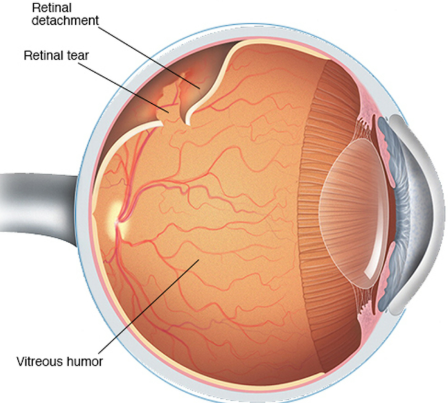
The retina is a thin layer of light-sensitive tissue that lines the back of the eye. It functions much like the film in a camera, capturing visual images and sending them to the brain through the optic nerve. When the retina is damaged or separates from its normal position, it can result in serious vision problems that require prompt medical attention.
A retinal tear occurs when the retina develops a small break or rip. This typically happens when the vitreous, the clear gel that fills the eye, pulls on the retina as it naturally shrinks or shifts with age. In some cases, the traction from the vitreous can cause the retina to tear. If fluid passes through the tear, it can lift the retina from the underlying tissue, leading to a retinal detachment.
A retinal detachment occurs when the retina separates from the underlying layer of blood vessels that provide it with oxygen and nutrients. Once detached, the retina cannot function properly, and permanent vision loss can occur without timely treatment. Retinal detachment is considered an ophthalmic emergency.

Retinal tears and detachments are typically painless but often present with sudden changes in vision, such as:
Anyone experiencing these symptoms should contact an eye care professional immediately. Early diagnosis and treatment are critical to preserving vision.
Treatment depends on the severity and type of retinal damage:
Individuals who are highly nearsighted, have a family history of retinal detachment, have undergone prior eye surgery, or have experienced eye trauma are at increased risk. Regular comprehensive eye examinations are important for detecting retinal changes early. Prompt evaluation of new floaters, flashes, or visual field loss can prevent severe and permanent vision impairment.